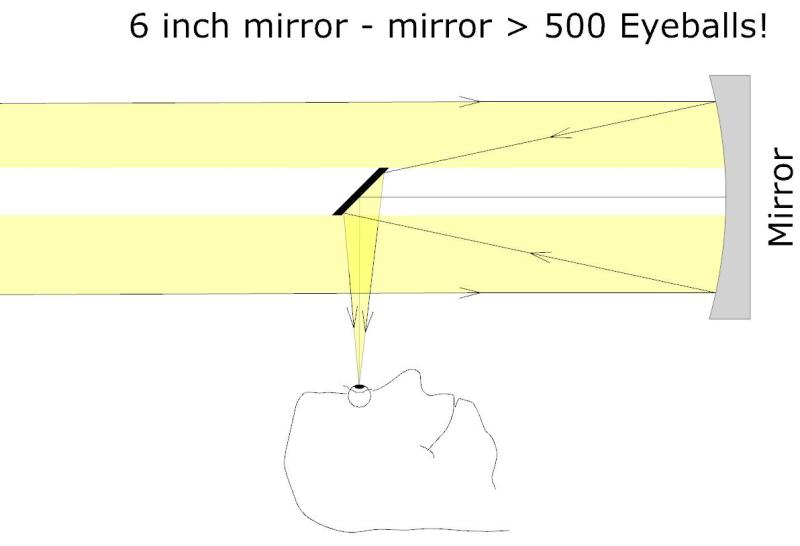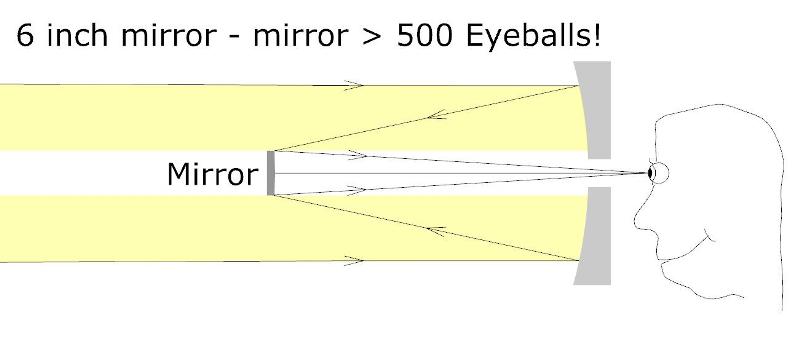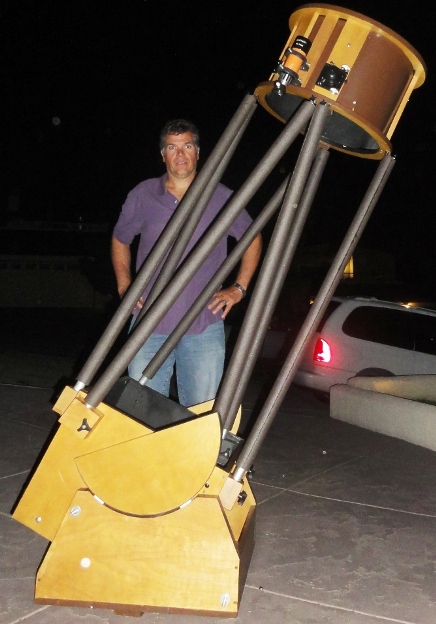|

| |
How Reflectors Work
Curved mirrors can be used to bounce light into your eye. Big, good
mirrors tend to be much cheaper than big, good lenses.
| A mirror can aim light to a point, such as an eyeball. A
six-inch mirror, like a six-inch lens can funnel 576 Eyeballs of light
into your eye. |
 |
There is a technical problem with this approach, however.
| In order to put your eye where the mirror focuses the light, your
head would block most of the light: |
 |
| The solution: use a small mirror - called a secondary mirror - to
bounce the focus point out of the light path: |
 |
| Note: the secondary mirror does block some light from reaching the
primary mirror. That's why we don't get the full 576 Eyeballs for
the 6-inch mirror size.
This type of system, with a parabolic primary mirror and a flat
secondary bounce the light out the side is called a Newtonian reflector.
|
| Another common "wrinkle" in reflector design is to bounce the light
back through a hole in the primary mirror. The hole does cause any
additional light loss, since it's in the shadow of the secondary mirror.
These are known as Cassegrains. |
 |
| To the right is an example of a "Truss Tube Dobsonian"
Newtonian Reflector. Truss tube dobs allow large scopes to be
relatively portable.
The primary mirror is mounted in the base and the secondary mirror
and focuser is mounted in the upper "secondary cage".
The truss not only keeps the weight down, but allows air to flow over
the primary mirror allowing quicker cool down (warm mirrors degrade the
scope's images). |
 |
|